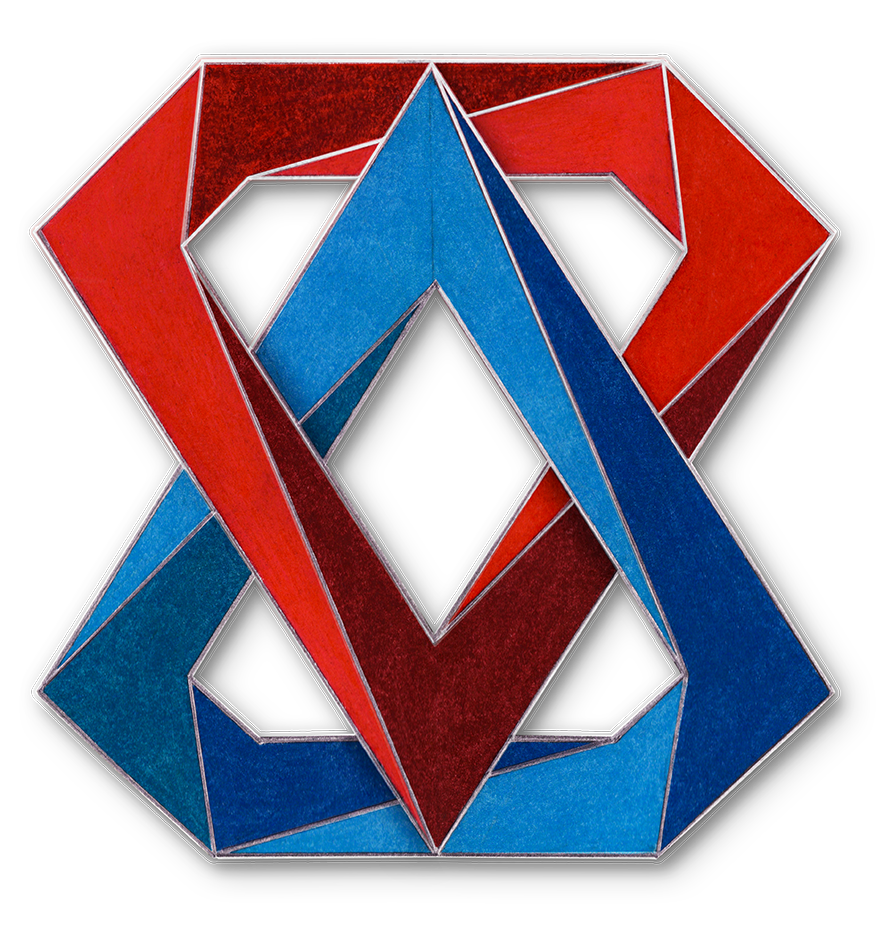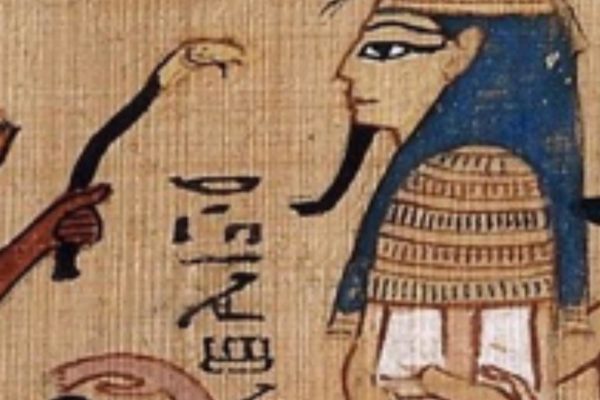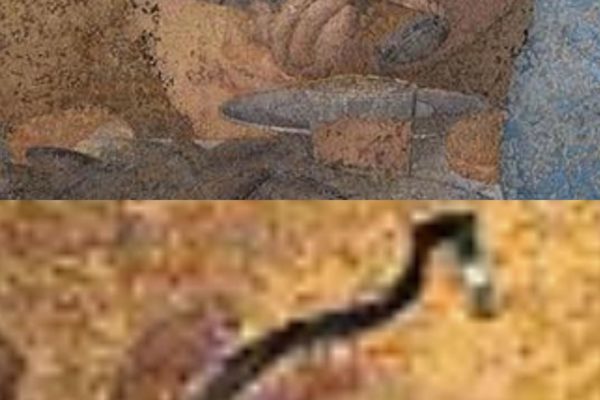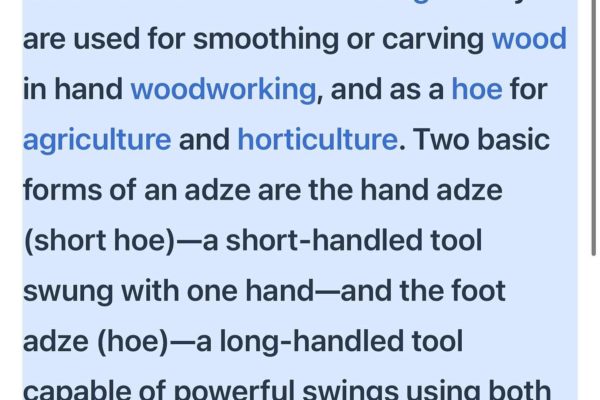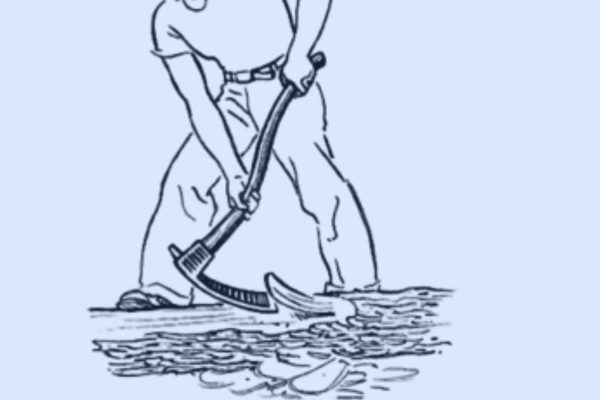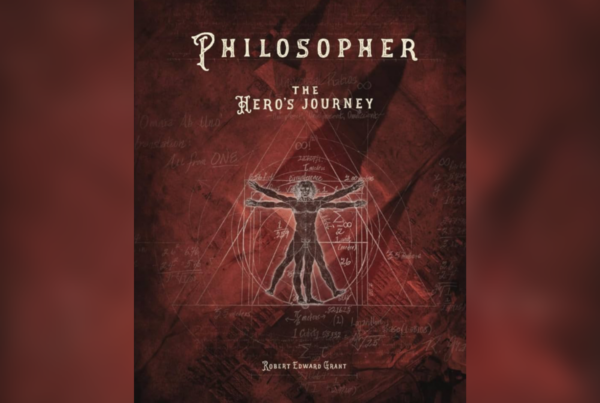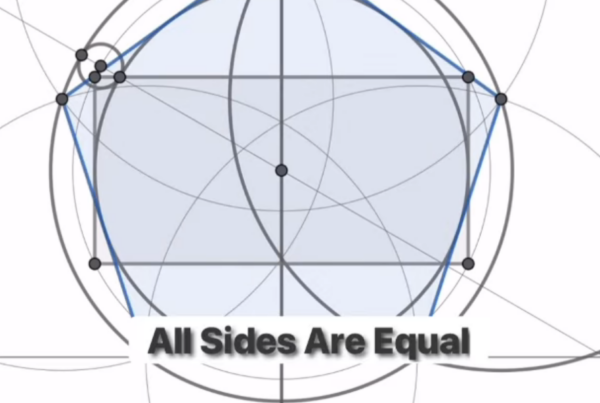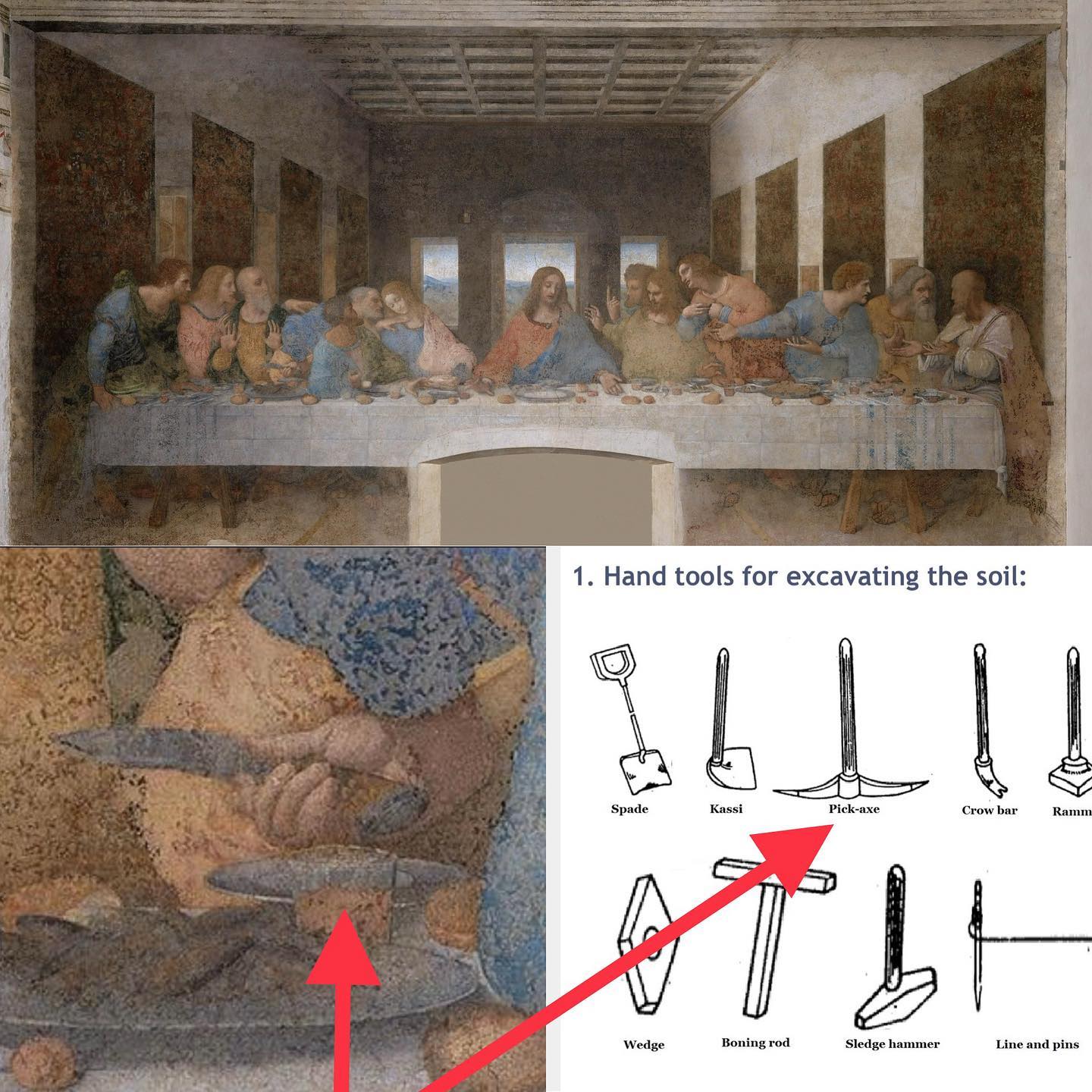
What is that (next to the knife Peter appears to be holding behind his back) on Leonardo Da Vinci’s ‘Last Supper’ table? A plate and cup taking the shape of a pickaxe? For the plate to be positioned thus it seems it would have to be floating slightly off the table. 🧐
And the shape of the knife is certainly an odd shape….where have we seen this precise shape before?
The Opening of the Mouth Ceremony is Ancient Egypt:
The ceremony involved a symbolic animation of a statue or mummy by magically opening its mouth so that it could breathe and speak. There is evidence of this ritual from the Old Kingdom to the Roman Period. Special tools were used to perform the ceremony, such as a ritual “ADZE”, an arm shaped ritual censer, a spooned blade known as a peseshkaf, a serpent-head blade, and a variety of other amulets. (NOTE: There are Two Types of ADZE; 1.) a handheld device with a blade and 2.) a pickaxe ⛏ shaped Hoe “tool” requiring two hands).
The ancient Egyptians believed that in order for a person’s soul to survive in the afterlife it would need to have food and water. The opening of the mouth ritual was thus performed so that the person who died could eat and drink again in the afterlife.
Translating literally as “opening of the mouth,” the Egyptian terms for the ritual are wpt-r and um-r.
According to Ann Macy Roth, the verb wpi connotes an opening that splits, divides or separates: “it can be used, for example, to describe the separation of two combatants, the dividing of time, or even an analysis or determination of the truth.” (source: Wiki)
If it is intended to be the shape of a pickaxe, why would Da Vinci place it on the Last Supper table and why is Peter holding a knife in a somewhat contorted way behind his back? What is he trying to tell us? And why is the knife blade appearing to be held by Peter take that particular shape? Please comment your thoughts below? Might this have something to do with the entrance to the Throat Chakra chamber ABOVE the Grand Gallery of the Great Pyramid?
